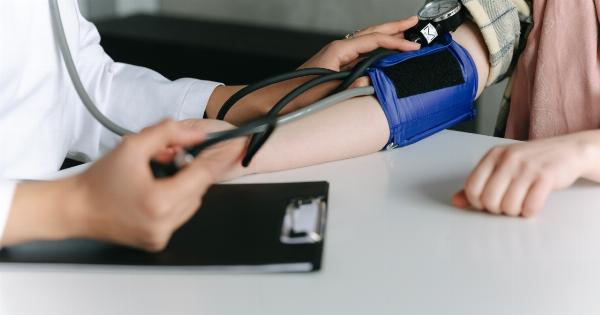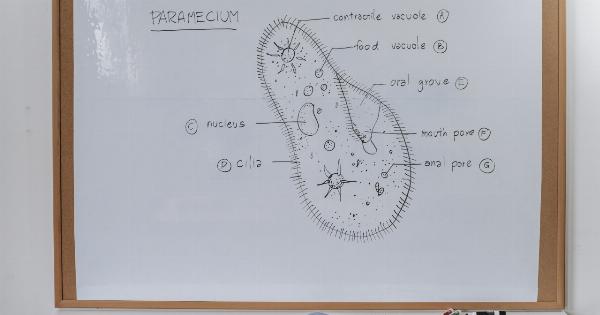Angina is a common symptom that is characterized by chest pain or discomfort. It occurs when the heart muscle doesn’t receive enough oxygen-rich blood.
Understanding the causes and treatment options for angina is essential in managing this condition effectively.
1. Causes of Angina
Angina is primarily caused by a narrowing or blockage in the coronary arteries, which supply oxygen-rich blood to the heart muscle. Common causes include:.
Atherosclerosis: This condition refers to the buildup of plaque or fatty deposits in the arteries, reducing blood flow. The plaque can rupture, leading to a blood clot that further restricts blood flow.
Coronary artery spasm: In some cases, the coronary arteries may spasm and temporarily narrow, reducing blood flow to the heart muscle.
Coronary artery disease: This condition occurs when the coronary arteries become damaged or diseased, making them more susceptible to narrowing or blockages.
Other risk factors: Certain risk factors, such as smoking, high blood pressure, high cholesterol, obesity, diabetes, and a sedentary lifestyle, increase the likelihood of developing angina.
2. Types of Angina
There are different types of angina, each with distinct characteristics:.
Stable angina: This is the most common type of angina and occurs during physical exertion or emotional stress. The symptoms are predictable and usually subside with rest or medication.
Unstable angina: Unstable angina is more severe and unpredictable. It can occur even at rest and may not respond to medication or rest.
This type of angina requires immediate medical attention as it may indicate an impending heart attack.
Variant angina: Also known as Prinzmetal’s angina, this type of angina is caused by coronary artery spasms. It typically occurs at rest and can be severe, but the symptoms can often be relieved with medication.
3. Symptoms of Angina
The most common symptom of angina is chest pain or discomfort. However, symptoms can also manifest in other areas of the body, such as:.
Neck: Pain or discomfort may radiate to the neck.
Shoulders and arms: Pain or discomfort may extend to the shoulders or arms, particularly the left arm.
Jaw: Some individuals may experience pain or discomfort in the jaw.
Back: Pain or discomfort may be felt in the upper back region.
Shortness of breath: Many people with angina may also experience shortness of breath, especially during physical activity or exertion.
Nausea: Some individuals may feel nauseous or lightheaded during an angina episode.
Sweating: Excessive sweating, cold sweats, or clammy skin may accompany angina.
4. Diagnostic Procedures for Angina
When angina is suspected, various diagnostic procedures may be used to confirm the diagnosis and determine the underlying cause. These procedures may include:.
Electrocardiogram (ECG): An ECG is a non-invasive test that records the electrical activity of the heart. It can detect any irregularities in heart rate or rhythm, which can help diagnose angina.
Stress test: Also known as an exercise test, a stress test involves monitoring the heart’s activity while the patient exercises on a treadmill or stationary bike.
This test helps determine how well the heart functions during physical exertion and if exercise triggers angina symptoms.
Coronary angiography: This invasive procedure involves inserting a catheter into a blood vessel and guiding it to the coronary arteries.
A contrast dye is then injected, and X-ray images are taken to reveal any blockages or narrowing in the arteries.
Coronary CT angiography: Similar to coronary angiography, this non-invasive test uses computed tomography (CT) technology to create detailed images of the coronary arteries, highlighting any abnormalities.
5. Treatment Options
The treatment options for angina depend on the severity, frequency, and underlying cause. They may include:.
Lifestyle changes: Adopting a heart-healthy lifestyle is crucial in managing angina.
This includes quitting smoking, engaging in regular physical activity, following a balanced diet low in saturated fats and cholesterol, maintaining a healthy weight, and managing stress effectively.
Medications: Several types of medications can help relieve angina symptoms and prevent complications. These may include nitroglycerin, beta-blockers, calcium channel blockers, and antiplatelet or anticoagulant drugs.
Angioplasty and stenting: In cases of severe blockages, an angioplasty may be performed to widen the artery and improve blood flow. A stent, a small mesh tube, may also be placed to keep the artery open.
Coronary artery bypass grafting (CABG): CABG is a surgical procedure that involves grafting a healthy blood vessel from another part of the body to bypass the blocked or narrowed coronary artery, restoring blood flow to the heart muscle.
6. Prevention of Angina
To reduce the risk of developing angina, it is important to maintain a healthy lifestyle and manage any underlying risk factors. Here are some preventive measures:.
Quit smoking: Smoking damages the blood vessels and increases the risk of atherosclerosis. Quitting smoking is one of the most effective ways to prevent angina and other heart-related conditions.
Control blood pressure and cholesterol: High blood pressure and elevated cholesterol levels contribute to the development of angina. Medication and lifestyle modifications can help manage these conditions effectively.
Manage diabetes: Proper management of diabetes is crucial in preventing complications, including cardiovascular diseases. Regular monitoring of blood sugar levels and adherence to treatment plans are essential.
Maintain a healthy weight: Obesity is a risk factor for angina. Maintaining a healthy weight through regular physical activity and a balanced diet can significantly reduce the risk.
Exercise regularly: Engaging in moderate physical activity for at least 30 minutes most days of the week helps improve cardiovascular health, lower blood pressure, and reduce the risk of angina.
Reduce stress: Chronic stress can contribute to the development of angina. Finding healthy ways to manage stress, such as through relaxation techniques or hobbies, can be beneficial.
Conclusion
Angina is a common symptom resulting from reduced blood flow to the heart muscle. Understanding the causes, symptoms, and available treatment options is crucial in effectively managing angina and preventing complications.
By adopting a heart-healthy lifestyle and effectively managing risk factors, individuals can reduce their chances of developing angina and improve their overall cardiovascular health.






























